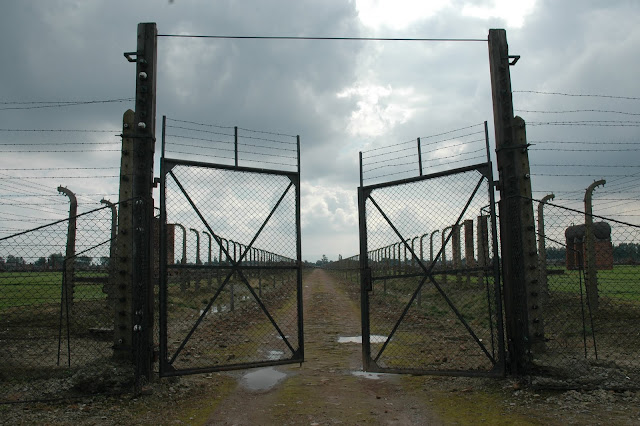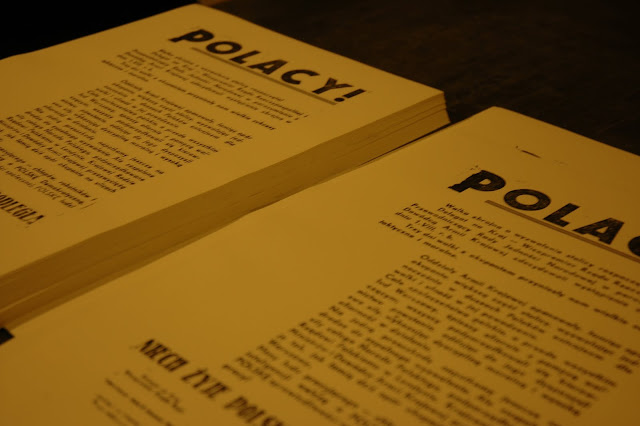Well, here I am again, ready to crush the very last stereotype that I care to tackle on this little blog. Grab your battle axes and join me in cutting down the mighty Icelandic Viking!
This was by far my most research-intense post of the last five "episodes" of EYHAIIWSO, because even though I knew a few things about helmets and the daily lives of Vikings, I was pretty ignorant on the history aspect of it all. I've always been terrible at history, which is another stereotype about women. Maybe because history is predominantly a bunch of stories about the dumb things that men do.
Once in community college, I was taking a pretty interesting history course where the teacher did a great job of making it as broad and entertaining as possible. During one class, we focused on Artemisia Gentileschi, who was a female Renaissance painter. Her story is always prefaced with an incident in which she was raped, and that this somehow influenced her to be a great painter. I've often been that kid in college classes who makes a significant pain in the ass of myself, and maybe the endless stories of men's conquests were getting to me, and I blurted out something like "What the hell! We finally focus on something a woman did, and we can't even give her credit for it because somehow it's the result of being raped! Maybe she was just a good artist on her own. Why can't we focus on that? Why do we need to give credit to some guy who raped her!"
The class stared at me and the teacher said something like "good point", and I think I ended up writing a semi-lengthy rant on the subject on the test later.
My point is, history is boring and frustrating for me, so I never really paid much attention. But this post was really fun to write and I took a lot of time sorting through dozens and dozens of different articles to get the most accurate information on three different points that I'm going to make. I apologize for any errors, however, because historical information still isn't the easiest thing for me to retain. Ok....onward!
Picture a Viking, will you? Just close your eyes and think about everything you know about Vikings and mash that information up into one single image. I'll wait.
Does it look something like this?
Or this?
How about this?
Not seeing a lot of variation here, are we? These are all drawings done by guests at Norður-Vík in the guestbook. Just
one guestbook.
You may have noticed that each of the drawings above have three things in common;
1. They have horned helmets
2. They have weapons
3. They are men
Of course you know what I'm going to say next... It's (mostly) all wrong.
But don't worry, it's not your fault. None of this is. It's August Malmström's fault. I had to do a surprising amount of digging to find the original image that the modern Viking stereotype comes from. That's because it's generally attributed to Richard Wagner and Arthur Rackham's illustrations for epic opera, The Ring of Nibelung. But that's odd, because The Ring of Nibelung isn't about Vikings at all. It's a fantasy piece about Germanic gods and heroes. It's possible that people referenced the illustrations from "The Ring" to gather ideas about Viking costumes, because they are incredibly captivating. Here are a few examples of imagined costume by Rackham, not because they have much to do with the subject here, but because they are so darn beautiful.
You can see how it would get mixed up, but it's irrelevant.
August Malmström illustrated a Victorian adaptation of a 14th Century Icelandic poem called Frithiof's Saga.
It wasn't a particularly good saga, which might be the reason why it was so difficult to locate any of the full illustrations. This was the best I could do:
There is scant evidence that any group of people have ever used horned helmets in battle. Winged and horned helmets were used by Celts and Germanics, but most likely for ceremonial purposes only. And get ready for this- there is very little evidence that Vikings wore helmets at all. Headgear was most likely made of leather, and the few metal helmets that have been found from the Viking age were simple and dome-shaped and probably were reserved for the extremely wealthy. Remember that life in Iceland in the 800s was not a particularly fruitful or prosperous time.
The idea of barbarians wearing horned helmets wasn't introduced into popular culture until the 1800s. And even then, it took a while to take hold, because the Celtic winged helmets remained more popular. The image of these aggressive pieces of headgear plays directly into the idea that Vikings spent most of their time fighting and pillaging.
In my experience, Icelanders love to brag about which brave, poetic Viking they are descendant from and reference the appropriate saga. I have one friend who pointed out the hill on his farm where one famous settler lived. "He killed his first man at six years old and wrote his first poem a year later", he told me. And he was a direct descendant, easily traced back thanks to good old fashioned Icelandic record-keeping.
Although people admit to the stories being exaggerated, they are indeed based in fact. But it's no surprise that any Icelander can claim bloodlines with anyone they please. After 1,000 years, there are one trillion branches in a family tree, assuming that each couple only has two children. (Keep that in mind when someone tells you they are related to Shakespeare or King Charlemagne, because you can quite honestly reply that you are, too.)
Icelanders are pretty good record keepers. Every person in born in Iceland is documented in the
National Registry, along with marriages, deaths, and land exchanges. There is even a National Horse Registry if you want to trace your horse back to it's settler days. Amazingly, 80% of all Icelanders who have ever lived can be traced on family trees. This is partially due to the small population (approaching 300,000). I was just having breakfast with my friend Denní (Æsa's father) and asked him who was his most distant relative from the Sagas. He immediately replied that it is Egill-Skallagrímsson, who lived in the year A.D. 910. His father was a Norwegian, and Egill was born in Iceland.
Egill's story is a popular one, because not only was he a gifted poet (he was three years old when he wrote his first poem), he was also completely insane.
It might come as a surprise to some people that (at least in Iceland) Vikings are more revered for their poetry than for their violence. It should not be a surprise, however, that Vikings did a lot more than go out on raids and kill each other.
The Icelandic Viking Age started in A.D. 793, and they were craftsmen, writers, traders, explorers, artists, and farmers. For a long time, the original settlers lived without rulers, laws, or government, but eventually they became the founders of Alþingi in 930, which remains the world's oldest functioning parliament.
The original settlers definitely engaged in a fair amount of bloodshed. The Sagas are chock full of revenge killings, and they did sail to Scandinavia on pirate-type excursions, but for the most part, they were average farmers with a complex culture.
Shortly after the establishment of Alþingi, they were converted to Christianity and their culture disappeared. I asked another Icelandic friend of mine, Þráinn, what he thought happened to the Vikings and why they vanished in the year 1000 because of Christianity. He said "Have you ever met an Icelander who was Christian?" I answered no.
For the most part, the Vikings never left. The word "Viking" wasn't introduced as a label for a culture until the 1800s (remember when that horned barbarian image became popular?) although it was used as a verb in the old Norse language. In the early 1000s, it was introduced into the English language as a synonym for a pirate, and Scandinavians still tend to use it to refer to the specific people who went out on expeditions.
This implies that Icelanders are purebred Viking stock, but a lot of genetic study has been conducted in the last few years that introduces some surprising (and not so surprising) ethnicities. The not so surprising one you might recall from my earlier post about Icelandic women. The original Icelanders kept Irish and Scottish slaves (Westmen, where the name for the island of Westmannaeyjar comes from) and apparently had no problem with keeping some of them as family. Icelanders with family trees that go back 1000 years have predominantly Viking grandfathers and Irish or Scottish grandmothers, but interestingly, they are less-closely related to their grandmothers than they are to their grandfathers. That's simply because some families were bigger than others. There has also been a discovery of Native American mitochondrial DNA from a single woman in Icelanders, but it's a mystery how this woman made it all the way to Iceland.
If you're thinking that Iceland looks pretty inbred at this point, you're not that far off from the truth.
I've heard stories of people who start dating and check the National Registry to see if they are too closely related. But this might be another tall tale.
Maybe I'll address is again in another posting, but for now, this is the end of Part 5. I hope that next time you think of the Icelandic Viking, you don't immediately picture a Victorian stereotype, and give a little credit to the artisans and poets who toughed out the tortured landscape of Iceland over 1000 years ago. Somehow people have managed to live here despite frigid winters, famine, disease, poisonous volcanic gas, floods, and any number of other horrible events that would have made most people high-tail it for Spain.
This officially marks the end of EYHAIIWSO. It was nice of you to join me in an annoyance-based series of short essays that I sincerely hope were at least more accurate than the original myths they were trying to dispel. Thanks.
(If you're interested in some of the websites I used to gather the information for this post, they are listed after the cut)










































